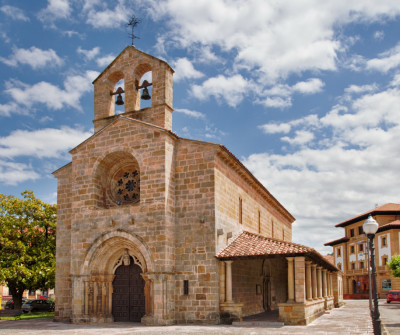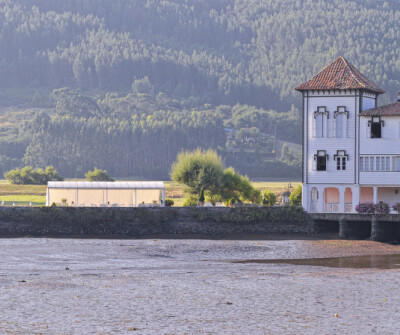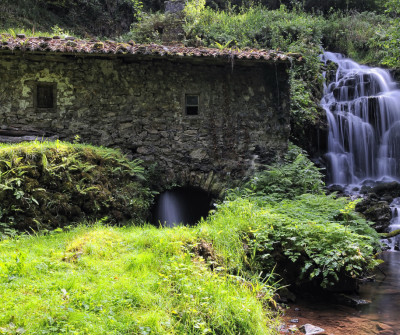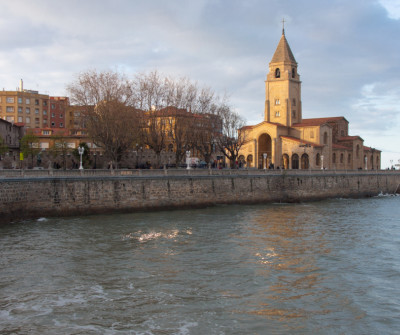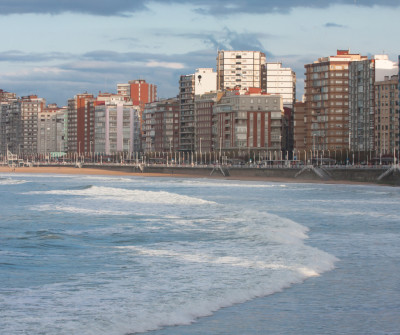You leave Sebrayu/Sebrayo through the main road used to get there, and then by going under the autovía A-8 and continuing at its side. The Camino merges into the N-632 and reaches the town of Villaviciosa, where there is a place to take some rest at El Fresnu, before arriving at Villaviciosa proper, with tables, benches and food and drink vending machines. In Villaviciosa, you may visit the manors and go to a sidrería (cider bar), or even visiti a producer of their famous cider. The route goes past the church of Santa María de la Oliva and leaves the town towards Grases.
READ MOREThe village of Casquita gives you several options: you can go straight ahead towards Xixón/Gijón, or to the left towards Uviéu/Oviedo, where you will join the Camino Primitivo or Original Way / Primitive Way. If you go towards Xixón/Gijón, you will continue on the Northern Way next to the River Valdediós and you will start climbing towards the Altu la Cruz, to, later on, descend to Pión/Peón.
The last climb of the day is El Curviellu/Corbiellu, which indicates that Xixón/Gijón is near and that you need to pay special attention to the signposting in order not to get lost. Gijón is the largest city in Asturias, with a beautiful esplanade and urban beaches. The area of Cimavilla/Cimadevilla includes the church of San Pedro, the palace of Revillagigedo and the Plaza Mayor amongst other attractions.
Xixón/Gijón is famous for its Universidad Laboral, an architectural ensemble built in the mid-20th century which used to be the largest university of its kind in Spain. The grandeur of its architecture and history are well worth a visit, and so are the theatre, the church, as well as going to the top of the tower to see Xixón/Gijón in all its splendour, the coast and the nearby mountains.
Close to the Universidad Laboral, you will find the Jardin Botánico Atlántico, a botanical garden specialising in the flora of the Atlantic coast. It is a unique museum and a very large park with over 30000 plants and 2000 different species.
The Aquarium is quite modern and remarkable too. It is by the sea and it has over 60 tanks of both sea and freshwater animals. There are around 250 species including fish, invertebrates, mammals, reptiles, amphibians and birds. Sharks are quite a sight - everyday divers go inside their tanks to feed them. Besides, you can also have dinner under water.
Tips from our postmen and women
What to do and see in the stage Sebrayo - Gijon?

“I would recommend taking a detour and visiting the Conventín de Valdediós, a pre-Romanesque 9th-centurychurch in-between the Northern Way and the Original Way towards Uviéu/Oviedo. Before Casquita, the Camino goes past the church of Amandi, a beautiful Romanesque 12th or 13th-century chapel. I would take a break at the recreation area of Cordal de Pión, on the hilltop, before descending towards the village of the same name. In that area, you will find a Neolithic necropolis, and you can also enjoy the view”.


 Filter
Filter